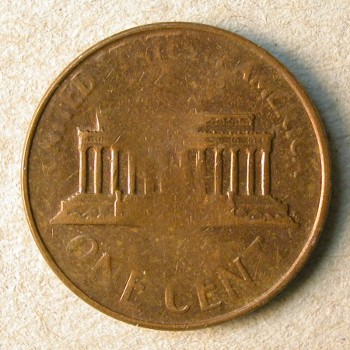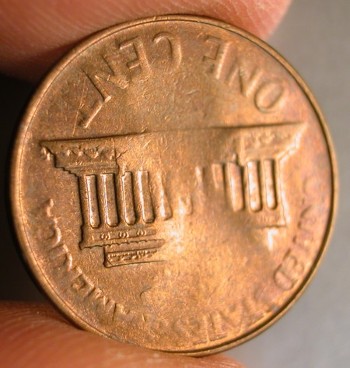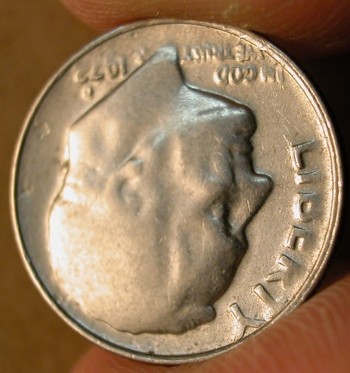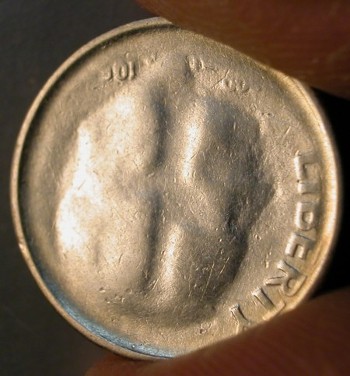Part VI. Striking Errors:
Struck-Through Errors:
Struck Through Grease:
Ghost Images Formed by Grease (“Greasy Ghosts”)
Definition: Die fill (“grease”) of the right texture and viscosity will tend to flow toward areas of relatively low effective striking pressure. Areas opposite large, centralized design elements (e.g., busts and buildings) are commonly affected. Over time, grease will migrate over the die face and accumulate in these areas, generating a deposit that vaguely duplicates the outline of the feature on the opposite die. As a result, each coin that is struck will carry an incuse, mirror-image version of the design present on the opposite face.
These ghost images closely resemble, and are frequently confused with incuse ghost images that form as the result of weak strikes and strikes on abnormally thin planchets. The difference is that coins on which greasy ghosts appear are well-struck and often show other areas affected by grease.
Greasy ghosts are known for all modern denominations. For more information, see the July 5, 2010 issue of Coin World.


A ghost image of Lincoln’s bust formed by an accumulation of “grease” appears on the reverse face of this 1971-S cent.


The 1972-D dime on the left shows a greasy ghost in the middle of Roosevelt’s head that represents the torch and nearby olive leaves. The 195x-S silver dime on the right has an even more impressive ghost version of the same features.